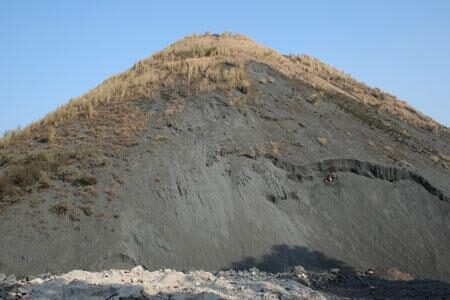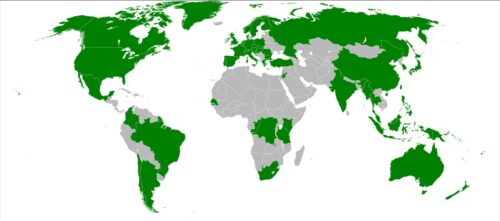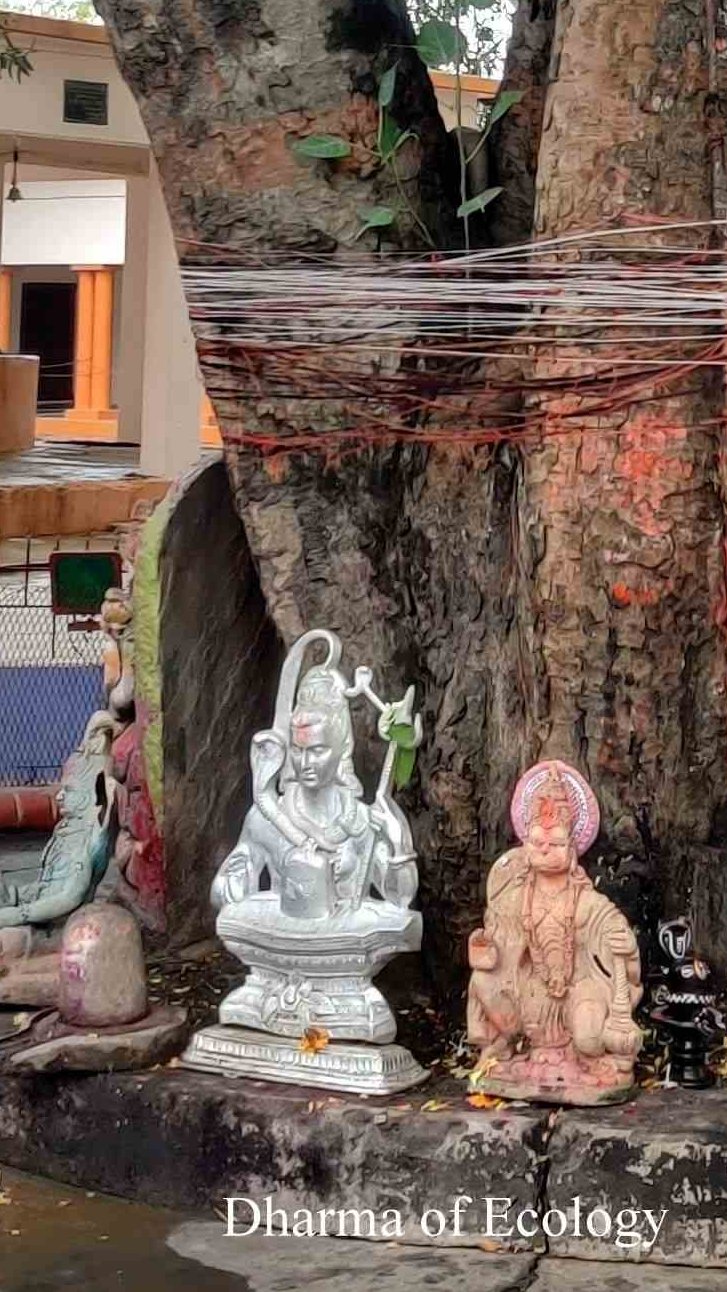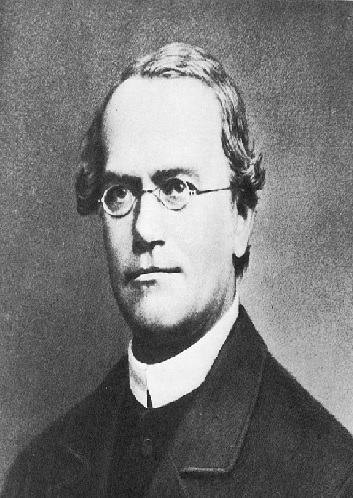The Pollution of Air leads to severe consequences on local, regional, national and international levels.
On the local and regional levels, air pollution creates various types of problems against living and non- living environment. In the living environment it causes different types of physical, physiological and mental diseases.
The smoke of cigarettes and carbon monoxide released into the air adversely affects the brain and the central nervous systems of human beings.
The gases like sulphur dioxide and nitrogen oxides cause acid rains when they combine with the rain water. This rain damages plants and causes considerable losses in their productivity by reducing the rate of photosynthesis.
It makes the water of water bodies acidic and endangers the lives of aquatic animals and plants. Acid of acid rain damages historical monuments and other buildings by reacting with their marble walls. These gases may cause deaths of humans and animals if inhaled in high concentration. Smoke, mist and fog cause dangers to living beings. Dust, particles of metals, asbestos, coal, and pathogens cause severe diseases of respiratory tract, skin and eyes etc.
On the global level air pollution produces serious consequences like the depletion of the ozone layer, global warming and the climate change. These problems produce many secondary problems on the global level. Green House Effect is caused when carbon dioxide and other temperature absorbing gases accumulate in the atmosphere in higher concentration in the form of a dense belt. This belt absorbs atmospheric heat and does not allow the heat of the earth to escape out.
Under these conditions the temperature of the earth starts increasing. This is called as Green House Effect. This is so called because the temperature inside a green house is regulated through the glass walls through this mechanism. An intense Green House Effect due to high concentration of temperature absorbing gases in the atmosphere leads to abrupt rise in atmospheric temperature leading to heating of the earth. This condition is called as Global Warming.
Global warming can change patterns of whether which causes changes in climates. Climate changes can adversely affect the biosphere and can lead to losses in biodiversity and agricultural production. Global Warming is causing ice melts in Polar Regions and ice-caps which may further cause rise in levels of seas and oceans leading to submergence of coastal areas.
Ozone is a gas which is formed due to decomposition of oxygen molecules in the atmosphere under in influence of ultra violet radiation. When a molecule of Oxygen is decomposed, it produces Oxygen atoms that further combine with oxygen molecules to form Ozone(O3). Ozone is considered as a pollutant if found near the surface of the earth. In the atmosphere Ozone forms a belt called as Ozone Belt. This belt absorbs ultra violet radiations that may otherwise reach to the earth producing serious effects like cataract of eyes, skin cancer, deaths of microorganisms, necrosis of plant leaves etc.
With the increasing development and changes in life styles humans have started production and consumption of such chemicals like Chlorofluorocarbons that are widely used in refrigeration and sprays. On the other hand, inappropriate agriculture practices cause large scale release of methane gas. These chemicals react with atmospheric ozone to cause thinning of the ozone belt leading to wholes. These wholes may allow the harmful radiation to pass through and to reach to the earth causing deadly effects. In case human beings are serious to reduce or control the threatening problems of environment causing damages on local and global levels, they will have to adopt such measures so as to check or control these problems.
Air Pollution can be prevented and controlled through following methods-
(i) Plantation, compensatory plantation, and plantation along road sides and rail tracks
(ii) Judicious utilization of fossil fuels like coal, petroleum and petroleum products
(iii) Ban on the use of aerosols and search for their alternatives
(iv)Fitting specific devices for the control of pollution caused by the exhaust of Motor vehicles
(v) Fitting of pollution control plants in industries, and monitoring and control of industrial units causing pollutions
(vi)Prohibition and control on burning of plastics and garbage
(vii) Putting legal ban on slash and burn cultivation
(viii) Fitting of tall chimneys with filters in industrial units
(IX) Use of renewable sources of energy.
Burning of fossil fuel products- effect on ecosystem and human health
Fossil fuels- coal, petroleum and natural gas, are sources of energy and lots of useful substances. They have been and still they are the back bones of the economic developments and the basis of the modern civilization. These are usually burnt to produce energy. But burning of fossil fuels is the root of most of the pollution and secondary problems that tend to threaten the existence of life on earth today. Here are some examples:
Burning of fossil fuels produces a number of seriously harmful pollutants -gaseous and particulate. Some of the gaseous pollutants produced on burning of fossil fuels are -Sulphur dioxide, carbon monoxide, hydrogen fluorides, hydrocarbons, and photochemical oxidants. The particulate produced on burning of fossil fuels are- dust, smoke, soot, aerosol, fumes, smog etc.
Solid and liquid aerosols that remain suspended in the atmosphere are called as particulates. Particulates can be defined as non-gaseous concentrations in the atmosphere. Hence these cannot be expressed in volume units. Their size is usually measured in microgram per cubic meter (µg/m3). 1 microgram (1µg) is equal to 0.00000004 oz.
The typical sizes of atmospheric particulates range from 0.1µm to 1µm. These are small solid particles and liquid droplets that can pose serious threat to the quality of air. Smoke, dust, mist, sprays, chlorofluorocarbons (CFCs), fumes etc. are some examples of particulates.
Particulates are produced by human activities related to condensation or dispersion. The particulate matter can produce toxicity and respiratory problems like bronchitis and emphysema. Fluorides, lead, cement dust, potassium salts, smoke particles, plant spores, bacteria etc. are example of some other particulates.
Particulates may be organic or inorganic by chemical nature. Organic particulates originate from the combustion of fuels, automobiles and vegetation. Some of the organic particulates are Polycyclic Aromatic Hydrocarbons (PAHs), Aldehydes, Ketones, Peroxides, Esters and Oxidised and Polymerised Hydrocarbons etc. Inorganic Particulates originate from metallic oxides, sulphides and carbonates etc. These are produced on burning of fuels containing metals. Oxides of iron, vanadium, lead etc. are some of the inorganic particulates found in the sample of polluted air.
Particulate Matter found in air can be classified on the basis of the size of particles also. Those particulates which can be inhaled easily by human beings are called as Respirable Particulate Matter (RSPM). However, some particulates consist of bigger particles and hence cannot be and must not be inhaled through air. Such particulates are called as Non-Respirable Particulate Matter. When inhaled, both gaseous and particulate pollutants produced on burning of fossil fuels cause different types of lung and bronchial diseases.
In atmosphere they cause destruction of ecosystems and loss of species. These pollutants are root causes of most of the local and global environments. Since the fossil fuels are non-renewable and limited amount in the earth, these must be cared and conserved.
Where burning of fossil fuels is not avoided, the efficient and pollution free technologies must be adopted to check the release of both the gaseous and particulate matter against their entry into the atmosphere. A continuous effort towards the research and developments of alternate and non-conventional sources of energy can alone solve the problems.




